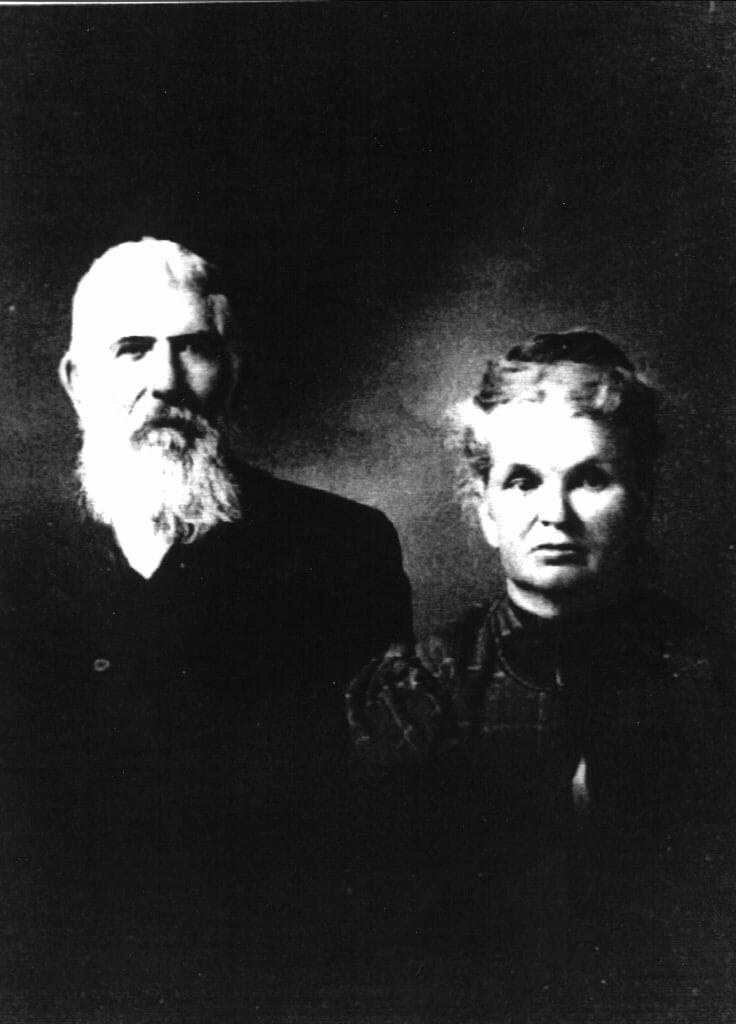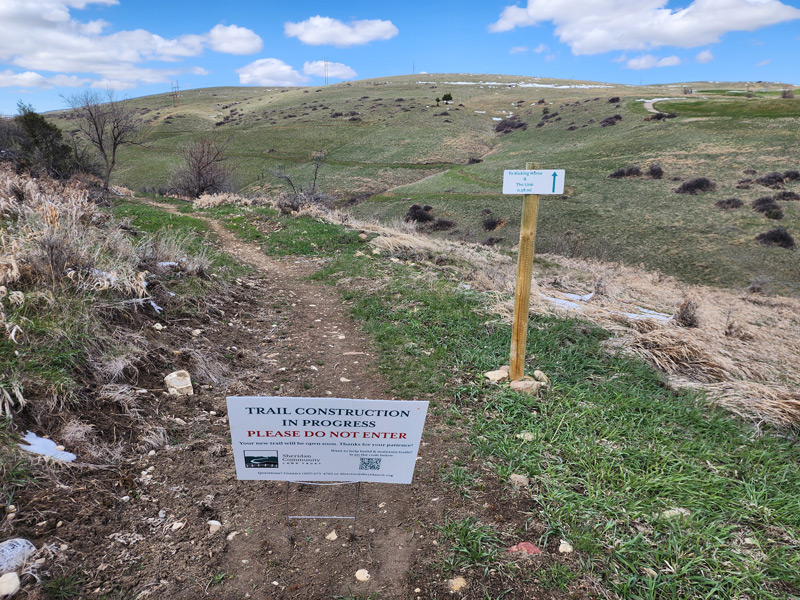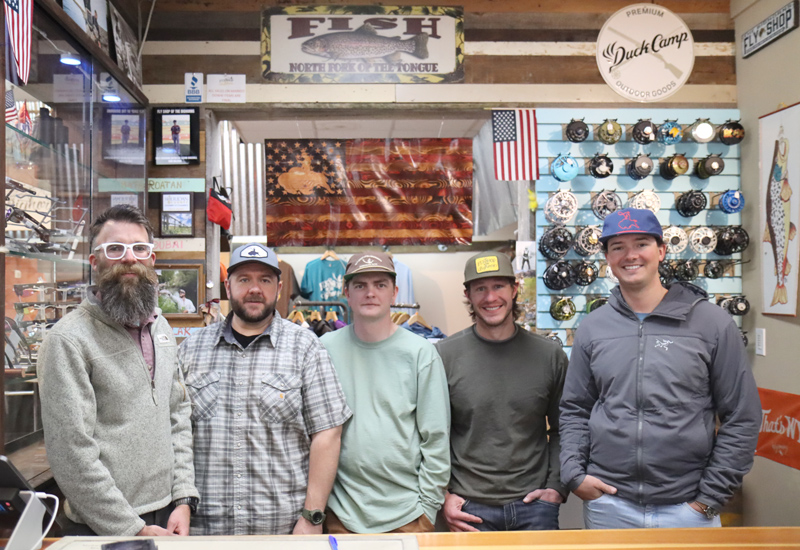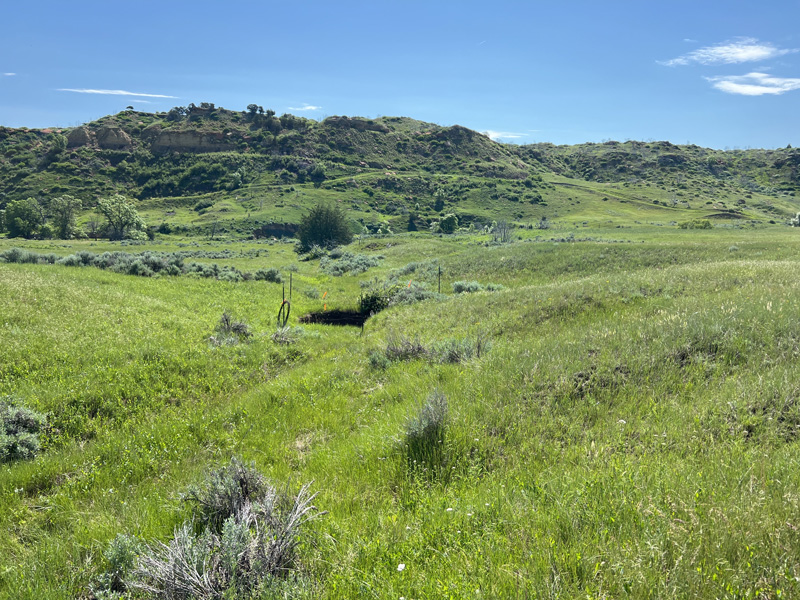Clearmont, from 1891
Conserved land and historic preservation working together in Sheridan County. In 2015, previous landowners Mark and Kim Tenneson celebrated a conservation easement and historical preservation easement to protect the land, the homestead, and the rich history that comes with it. The homestead is known as the Doc Huson home. For the Huson family, conservation is special. “The homestead and ranchland will remain as we know it for future generations,” said Lois Hall, Doc’s granddaughter. Her father was born at the homestead to E.W. “Doc” Huson and his wife, Clarissa Pettingill Huson.
Edward Huson was born in Boston, New York, a town south east of Buffalo, in 1832. By age ten, he was apprenticing to gain skills in medicine and pharmaceuticals. Edward continued apprenticing when his family moved west; first to Wisconsin, then to Iowa. People soon started calling him “Doc,” as was known for setting a broken bone by moving it until it felt straight, splinting it, and prescribing rest for 21 days.
When in 1881, Doc contracted typhoid fever, the family moved further west to a drier climate. Clarissa’s parents accompanied the Huson family during their westerly travel. During this segment of the Huson family life they already had seven of their 16 children. In three covered wagons they traveled the Oregon Trail to Wyoming. Before Buffalo became their home they lived on Crazy Woman Creek in a dugout near Trabing for five years. There is a memorial marker in the vicinity of where the Huson family lived on Crazy Woman Creek.
Doc Huson was prosperous in Buffalo, a community located on the Clear Creek crossing of the Bozeman Trail. He practiced medicine and operated a local drug store. Doc Huson had additional knowledge of how to fire bricks for construction. From this, he made a supplemental income selling bricks for homes and the new county courthouse. He also followed the stories of the railroad and the growth of the West. He saw these opportunities as a way to plat a town by means of homesteading near a location of where the Chicago, Burlington and Quincy Railroad would pass.
The Homestead Act of 1862 was signed by President Abraham Lincoln on May 20, 1862. It allowed any adult citizen 21 or older 160 acres to settle. Huson had two potential sites for homesteading, one was about 20 miles east of Buffalo located on Crazy Woman Fork of the Powder River. The second location was about 22 miles northeast of Buffalo down the Clear Creek of the Powder River. Twenty miles was about the average distance in those days for travel by wagon into town for supplies.
Doc Huson filed for the Crazy Woman Creek homestead site in 1886 and the second site northeast of Buffalo was filed by his mother-in-law, Sarah Pettingill in the spring of 1887. The anticipation of the railroad would soon decided which location would be the site for the Town of Huson. In 1882, Sarah Pettingill received her patent for the 160 acres she was 73 years old.
In April of 1891, the Huson family moved to Sarah Pettingill homestead on Clear Creek and Doc Huson sold his Crazy Woman Creek homestead to Aaron Kline. This same year, Sarah Pettingill sold her 160 acres to Doc Huson. His first project was to build the two-story rock home, which stands today. Doc’s sons, Harry and Fred, quarried the rocks and mixed the mud to set them such as the typical 1890s masonry construction. The original two-story rock home represents a gable front and wing-style house. With newer repairs to the outer walls of the home and the likely change of where a double window replaced a single window, there is a noticeable variation of the original grout coloration in between the quarried rocks.
Because Doc knew the railroad would head through Sheridan, he began to plan a town along the way called Huson. Huson and the new homestead was also a stop for a regional stagecoach route. Talk of the railroad quickly spread through region. By the fall of 1892, Huson was a bustling town with about 200 residents and 30 businesses such as J.T. Brown’s General Store and The Merchant’s Hotel. There was a four-page newspaper entitled The Northern Wyoming Stinger that published three editions of the paper during the town’s existence. Despite optimism, after seven short months, the railroad bypassed Huson and continued to Clearmont. The would-be town of Huson died quickly as residents migrated to Clearmont.
Doc Huson and Clarissa Pettingill Huson lived in the homestead until 1908. The land and homestead was sold as a ranch and they moved to Clearmont. Doc Huson built a new residence in the Town of Clearmont with a general store and drug store. Edward Huson passed away in November 1914 at the age of 81. Clarissa filed for a homestead near Spotted Horse, which is just east of the Sheridan County line. Her move was to be closer to her two sons, Fred and Harry. Both Doc and Clarissa are buried at Clearmont’s Sunny Brook Cemetery.
Today, the Huson homestead sits on 528 conserved acres. Nearly half of this property consists of sagebrush steppe and grassland, which is prime habitat for Greater Sage-grouse. Migrating waterfowl also use the riparian habitat along Clear and Ulm creeks. The original two-story rock home has had some newer additions to the north end. Both the east and west side of the north end has a wood and composite sided porch. An additional gabel is part of the recent additions and constructed of the same materials on the east side of the home.
If you plan a visit to the Huson home, please keep in mind that this property is privately owned. Please respect these folks by viewing the Huson home from outside the fence. An interpretive sign stands just outside the fence.
Directions from Sheridan, head south on RT. 14 towards Clearmont and take a left at Ucross. The Doc Huson home is on the right, just short of the Ulm road, beneath a grove of cottonwoods.
SOURCES
Clearmont Historical Group, Huson, Wyoming Backward Glance Series. Black Hills Press Clearmont, Wyoming, 2015.
Sheridan Community Land Trust Historical Marker at the site of the Huson Homestead, Sheridan County, Wyoming.










